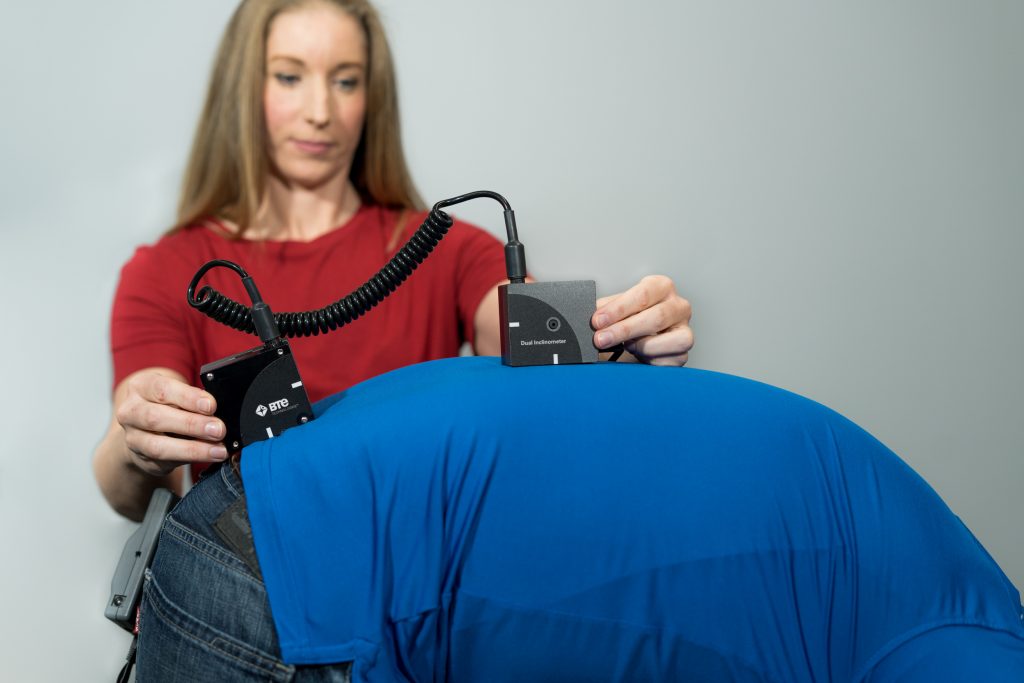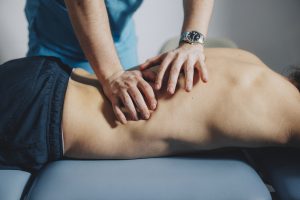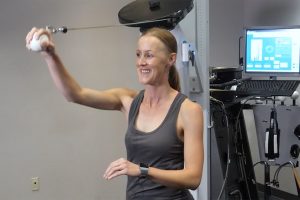
Why Hamstrings May Not Be the Cause of Low Back Pain After All
Treatment GuidelinesTypically, we see a combination of mobility and motor control dysfunctions. To achieve stabilization, the body compensates by sacrificing mobility elsewhere. As we assess and treat our patients, it is important that mobility dysfunctions are addressed before motor control dysfunctions.
When assessing lower back pain, one of the most common clinical tests is the forward fold. As a clinician, you’ve likely completed it hundreds of times. At some point in your career, you likely blamed tight hamstrings for a lack of lumbar flexion mobility. As our experience and knowledge expand, you may notice that hamstring tightness isn’t always the primary cause. So what is to blame? Today we unpack various dysfunctions that can contribute to lower back pain, how to assess them and how they play into treatment planning.
The Cold, Hard Facts of Back Pain
According to a JAMA study, between 1996 to 2006, Americans spent over 134 billion dollars on healthcare treatments for neck and back pain1. Lost wages and lost productivity do not even play into that astounding number. As a leading cause of disability and affecting nearly 7.5% of the world’s population at any given time, many call back pain a global epidemic2.
Given the numbers, we must continue to do our best as healthcare practitioners. Providing effective and efficient treatment, being cognizant of red flags, and making appropriate referrals are all imperative if we want to improve outcomes and contain costs.
So what is the best way to assess lower back pain? And what are the dysfunctions we should look out for that can limit forward flexion? Let’s break it down.
Mobility vs Motor Control Dysfunction
Most impairments in the musculoskeletal system can be categorized as either mobility dysfunctions or motor control dysfunctions. Mobility dysfunctions involve, as they suggest, either a lack or an excessive amount of mobility in a joint or surrounding tissues. Hypomobility refers to reduced mobility and results in tightness and restrictions. In contrast, hypermobility refers to excessive mobility and results in joint laxity and often instability.
Motor control dysfunction can also be termed stability dysfunction and is often more complex. Many equate motor control issues with weakness. However, many other contributors including postural alignment, proprioception, and central inputs all play into how we coordinate our bodily movements.
Typically, we will see a combination of both mobility and motor control dysfunctions, particularly in patients with lower back pain. In an attempt to achieve stabilization, the body can compensate by sacrificing mobility elsewhere. As we assess and treat our patients, it is important to address mobility dysfunctions before motor control dysfunctions. This opens up the available range of motion and ensures optimal conditions for motor control to occur.
Common Mobility Dysfunctions
Given our forward fold assessment, if the hamstrings aren’t to blame for a lack of mobility, what else could limit our patients from touching their toes?
First, let’s remember what the patient is doing in the first place – lumbar flexion. If a patient is stiff in their lumbar spine, it makes sense that their lumbar flexion could be limited. Those with excessive lordosis or demonstrating an anteriorly tilted pelvis may be stuck in extension and have difficulty coming into the flexed position.
Looking elsewhere, any limitations along the posterior chain could contribute to a lack of gross flexion. Traveling upwards, the thoracic spine is a common site of hypomobility. Thoracic stiffness leads to excessive strain on the lower back. Moving downward, tightness in the pelvis, hips, and calves can also limit forward excursion and must be considered if forward flexion is limited.
Muscular Tension vs Neural Tension
During evaluation, it’s crucial to consider all potential structures that may limit mobility including muscles, joints, tendons and nerves. Neural tension refers to the inability of peripheral nerves to glide freely through surrounding tissues. As it relates to lower back pain, neural tension will often present with limited spine mobility, pain, numbness and / or tingling in the extremities. Frequently caused by some sort of derangement at the spinal level, it can lead to limited lumbar flexion. In the case of lower extremity neural tension, the patient will typically present with a positive straight leg raise test. Their limitation may have nothing to do with a lack of hamstring mobility however and instead result from spinal derangement or nerve entrapment.
Common Sites of Weakness
Besides mobility dysfunction, common patterns of muscular inhibition and weakness can also be observed with low back pain. Poor trunk muscular function and atrophied multifidus have both been connected to back pain3. Although many blame hamstring tightness as a primary cause of pain, hamstring weakness may be more of a culprit than we previously thought.
As time spent sitting increases, so does the tendency for tight hip flexors and an increased anterior pelvic tilt. This position of the pelvis places excess stress on the lumbar spine but also puts the hamstrings and glutes in a less-than-optimal position to activate. What is referred to as passive muscle insufficiency in the length-tension relationship, this overstretch makes it difficult for the hamstrings to contract and produce force.
In addition to the hamstrings, the gluteal muscles also commonly display weakness or inhibition. Either from the overactivity of antagonistic muscles or due to pure strength deficits, the glutes cannot properly activate, increasing the risk of low back pain development4. This forces the nearby back extensors to overwork and can lead to muscular overload, strain and associated pain
Building Your Assessment Strategy
Every practitioner has their own flow when it comes to lumbar evaluation. Some start with functional movement, some start with range of motion. Regardless of the sequence, it’s important that each dysfunctional movement pattern be broken down joint by joint so treatment can be tailored appropriately.
As it relates to lumbar flexion assessment, we know the spine and hips need to flex, the hamstrings and calves must lengthen and the patient has to have the motor control to coordinate all of these activities at once.
As a general rule, lumbar flexion and extension movements should be performed in both weight bearing and non-weight bearing positions. If a patient completes normal movement in a non-weight bearing position, but can’t complete it with weight, we can assume a motor control or postural issue.
Following gross movement assessment, evaluate the individual’s active and passive straight leg raise. A positive test can indicate nerve tension, hamstring tension or calf tension. Youmay use an inclinometer to measure the active and passive straight leg raises. Active should reach about 70+ degrees and passive should reach about 80+ degrees.
The final piece is to assess individual lumbar segmental mobility and hip flexion mobility. You may perform individual manual assessments of lumbar segments. Or you may do a gross visual assessment with the patient in a child’s pose position. Using your goniometer or inclinometer, a reading of 110-120 degrees is normal for hip flexion.
Digital assessment tools can help you measure these specific points with greater accuracy. Those with integrated software like the EVJ take it a step further by recording the baseline and tracking progress over time. The EVJ’s strength and ROM measurement makes functional assessments quick and easy – learn more here.

If all mobility breakouts are normal, we can assume that a motor control dysfunction is present. While the treatment of mobility dysfunctions is fairly straightforward, motor control dysfunctions can be more challenging. Treatment of motor control issues should include stabilization and strength training. We must also include postural alignment, timing, breath control, and proprioceptive training for the best results.
Final Thoughts
As any healthcare provider knows, managing back pain can be challenging. Causes are often multifactorial and treatment involves a multi-faceted approach. Creating a systematic assessment method and treating both the symptoms and the cause will help optimize outcomes and keep your patients healthy.
Now stand up, reach for your toes and maybe (or maybe don’t) stretch your hamstrings.
Morgan Hopkins, DPT, CMTPT
Morgan Hopkins, DPT, CMTPT is a physical therapist and freelance healthcare writer. She spent over 8 years treating patients in outpatient orthopedics before transitioning to medical writing. Her clinical specialties include intramuscular dry needling, dance medicine, and sports medicine. Morgan is extremely passionate about holistic wellness, preventative care and functional fitness and uses writing to educate and inspire others. To get in touch with Morgan, visit her LinkedIn or Upwork pages.
References
- Joseph L. Dieleman, P. D. (2020, March 3). US health care spending by payer and Health Condition, 1996-2016. JAMA. Retrieved January 20, 2023, from https://jamanetwork.com/journals/jama/article-abstract/2762309
- The global burden of low back pain. International Association for the Study of Pain (IASP). (2021, October 12). Retrieved January 20, 2023, from https://www.iasp-pain.org/resources/fact-sheets/the-global-burden-of-low-back-pain/
- Lee P, Helewa A, Goldsmith CH, Smythe HA, Stitt LW. Low back pain: prevalence and risk factors in an industrial setting. J Rheumatol. 2001; 28: 346– 351.
- Buckthorpe, M., Stride, M., & Villa, F. D. (2019). ASSESSING AND TREATING GLUTEUS MAXIMUS WEAKNESS – A CLINICAL COMMENTARY. International journal of sports physical therapy, 14(4), 655–669.





